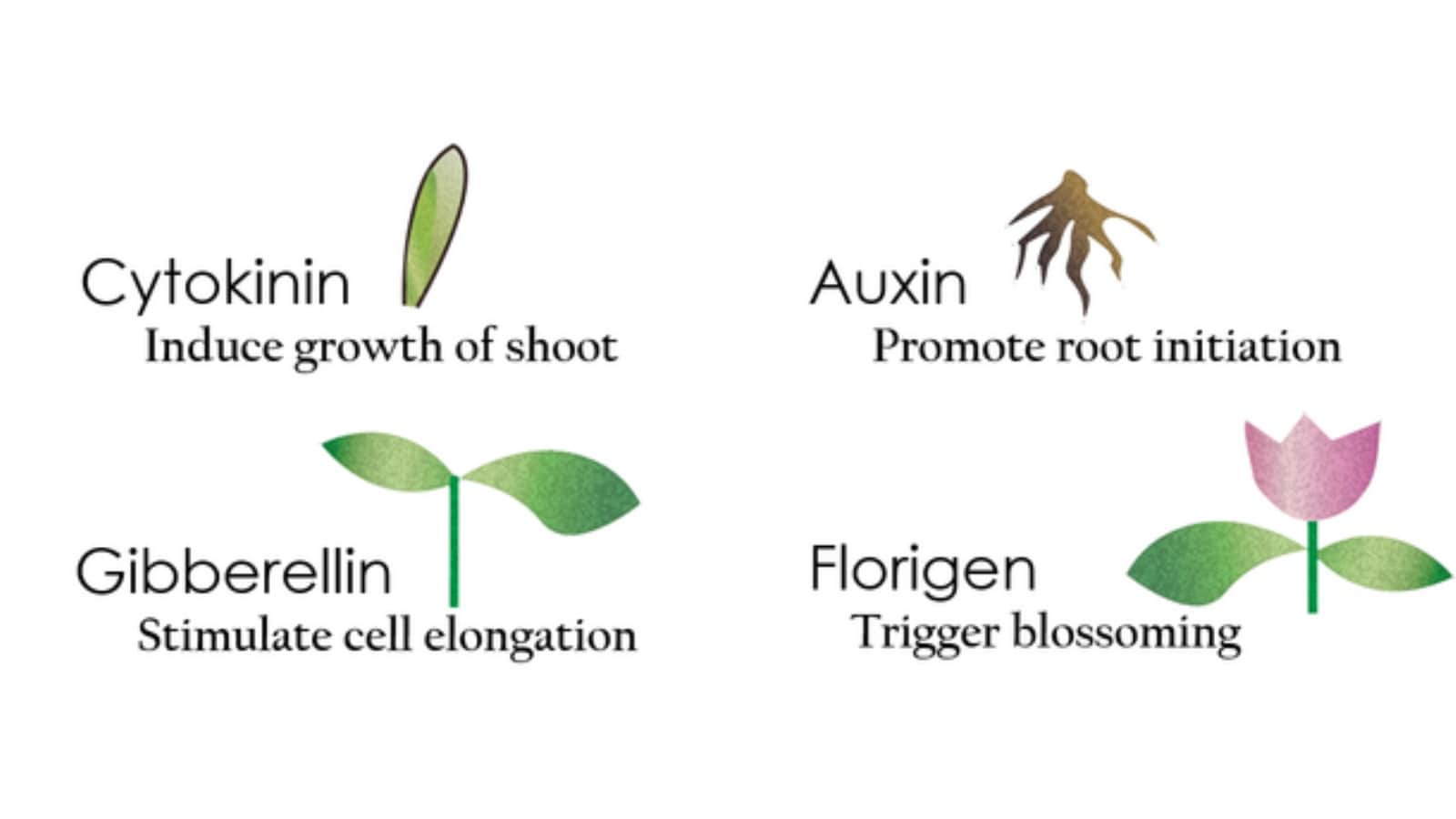
What Are The 5 Plant Growth Regulators?
When researching Plant Growth Regulators (PGR) for cannabis cultivation, it’s easy to lump them into a single category with the label “harmful”. We are here to look into PGRs and answer the question of ” What Are The 5 Plant Growth Regulators?”
When cultivating cannabis, it’s important to know that there are five groups of Plant Growth Regulating compounds. This PGR compounded includes Abscisic Acid (ABA), Ethylene, Cytokinin, Gibberellin (GA), and Auxin. These groups of PGR compounds mix in both synthetic and naturally occurring plant hormones that encourage plant growth.
This article’s focus isn’t on the harmful effects of PGRs, or the ongoing research into PGRs and cannabis cultivation. We will discuss the facts behind each PGR group and its known effects on cannabis seeds and plants.
If you want to read more about PGRs and their uses and effects on cannabis, read more here.
The most common types of PGRs used to grow marijuana are:
The cause for PGRs dense flowers (buds) is the Paclobutrazol. Lacing growing cannabis plants with Paclobutrazol (PGR) will cause the flowers to grow tighter and denser, and produce less THC.
PGR Auxin
.Auxin is a Plant Growth Regulator that plays a cardinal role in coordination of many nutrients in the cannabis plant.
Auxins can cause a few specific responses to cannabis plants that boost their growth. These include:
- Following or bending toward light (Phototropism)
- The formation of adventitious roots
- Downward root growth
- The formation of flowers
PGR Gibberellins
The Gibberellins in cannabis can break seed dormancy and speed up the germination process.
Rather than the traditional and natural germination process, you can soak marijuana seeds in a Gibberellins (GA) solution to see results faster.
PGR Cytokinins
The Cytokinins hormone stimulates cell division and is used for growing plants from tissue culture.
The cultured tissue consists of a single cell, a group of cells, or a whole or part of a cannabis plant.
Having high Cytokinin levels and low Auxin levels can have the part of the plant produce multiple shoots. If the cannabis plant has low Cytokinin levels and high Auxin levels, then the it can produce more roots.
One additional usage of Cytokinin is its ability to delay the aging and death of a marijuana plant.
PGR Ethylene
The Ethylene PGR is commonly used to induce the cannabis ripening process.
Introducing Ethylene into a cannabis plant can cause its leaves to droop (epinasty) and to drop off entirely.
Cannabis plants will produce the Ethylene Plant Growth Hormone when [under stress](https://www.frontiersin.org/articles/10.3389/fpls.2017.01782/full.
PGR Abscisic Acid (ABA)
The Abscisic Acid PGR is what puts cannabis plants into a state of dormancy or hibernation.
Introducing the ABA PGR to a cannabis plant will cause the leaves and flowers to fall of the plant (abscission). This is a common response to times of drought stress for plants.
Conclusion: What Are The Five Plant Growth Regulators?
When we hear about PGRs and cannabis, it is certainly scary as there is scientific evidence showing its potential danger to humans consumption.
Once we dig a little deeper, we begin to learn that a lot of the synthetic PGRs are replicating hormones in the plant that are produced naturally.
There are PGRs that extend a plants life, speeds up the germination and cannabis ripening process, and to also increase the development of shoots and roots.
In most cases, the negatives of synthetic PGRs outweigh the positive effects, especially when it comes to cannabis that’s smoked, vaped, or eaten.
Let us know your thoughts on the 5 plant growth regulators for cannabis plants in the comments!

James King
James is an experienced writer and legal cannabis advocate in Australia. He answers all the questions about business, legalisation and medicinal cannabis.
Disclaimer: Cannabis Place are not doctors and we recommend consulting health professionals for accurate information. This site may contain information regarding drugs. This medicinal cannabis content is designed for an 18+ audience. Click here for our full disclaimer

